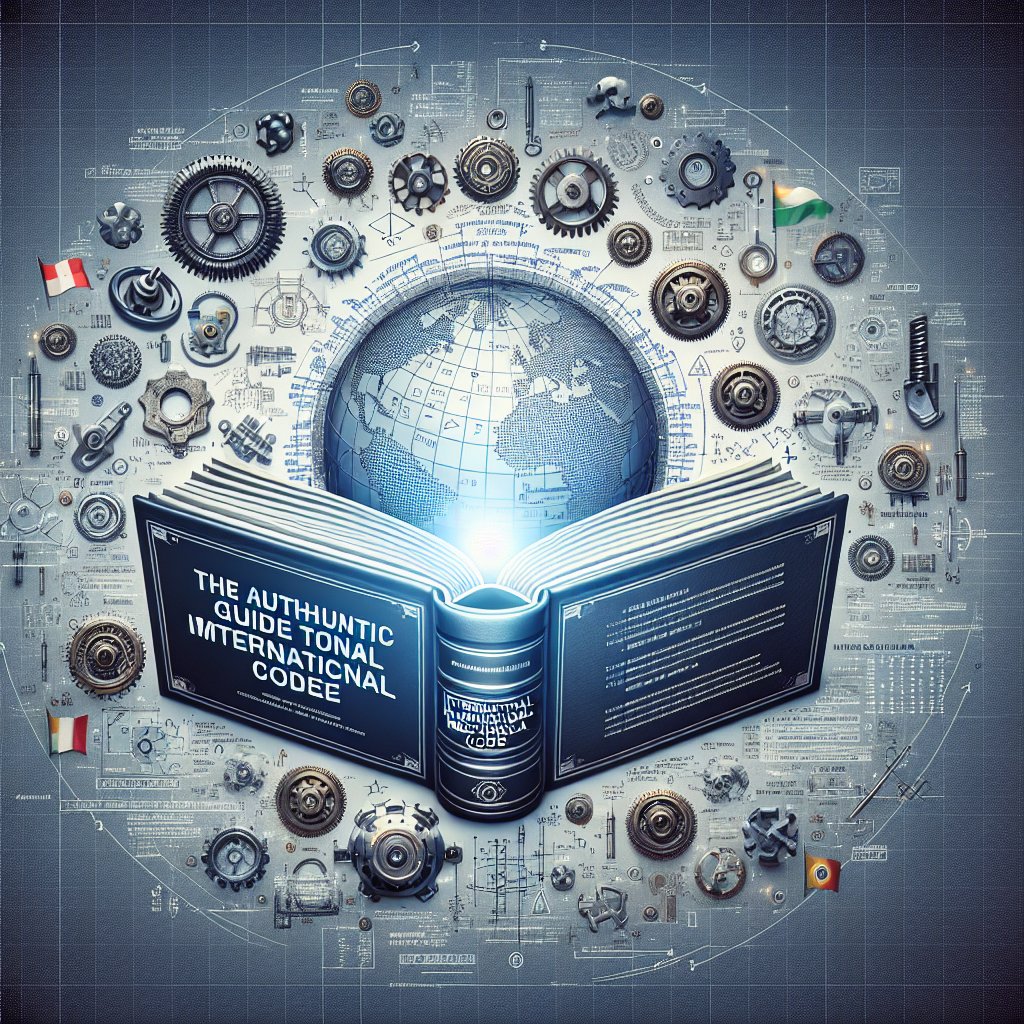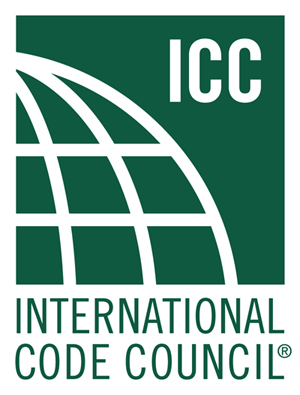Your cart is currently empty!
“Understanding the IMC: A Global Standard for Mechanical Systems”

The Authentic Guide to the International Mechanical Code (IMC): A Global Standard for Mechanical Systems
The International Mechanical Code (IMC) is an essential framework that governs the design, installation, and maintenance of mechanical systems worldwide. Its comprehensive guidelines ensure safety, efficiency, and reliability in diverse mechanical applications across various industries. This authentic guide delves into the IMC’s core components, its global impact, and practical applications, providing a holistic understanding of its significance in today’s interconnected world. For more detailed insights, you can visit IBC Manual.
Overview of the International Mechanical Code (IMC)
The International Mechanical Code (IMC) is a model code developed by the International Code Council (ICC) to regulate mechanical systems. It encompasses a wide range of topics, from heating and cooling systems to ventilation and refrigeration. The IMC is designed to provide a uniform set of standards that ensure the safety, efficiency, and reliability of mechanical systems. Its guidelines are based on the latest technological advancements and industry best practices, making it a critical reference for engineers, contractors, and inspectors.
First published in 1996, the IMC has undergone numerous updates to address emerging technologies and evolving industry needs. Its comprehensive nature makes it applicable to both residential and commercial buildings, providing a consistent framework for mechanical system design and installation. The IMC is part of the broader family of International Codes (I-Codes), which collectively cover various aspects of building safety and performance.
One of the key strengths of the IMC is its adaptability. The code is designed to be flexible, allowing for modifications and additions to address specific local conditions and requirements. This adaptability makes it a valuable tool for jurisdictions around the world, enabling them to implement the code in a way that best meets their unique needs.
The IMC is also notable for its emphasis on safety. The code includes detailed requirements for the installation and maintenance of mechanical systems, with a focus on preventing hazards such as fires, explosions, and carbon monoxide poisoning. By adhering to these guidelines, professionals can help ensure the safety of building occupants and the general public.
In addition to safety, the IMC places a strong emphasis on energy efficiency. The code includes provisions for the use of energy-efficient technologies and practices, helping to reduce the environmental impact of mechanical systems. This focus on sustainability is increasingly important in today’s world, where there is a growing awareness of the need to conserve resources and reduce greenhouse gas emissions.
Overall, the IMC is a vital tool for anyone involved in the design, installation, or maintenance of mechanical systems. Its comprehensive guidelines provide a solid foundation for ensuring the safety, efficiency, and reliability of these systems, making it an indispensable resource for professionals in the field.
Key Components of the IMC and Their Significance
The IMC is divided into several key components, each addressing a specific aspect of mechanical systems. One of the primary components is the general requirements section, which outlines the fundamental principles and definitions that apply to all mechanical systems. This section sets the stage for the rest of the code by establishing the basic framework and terminology used throughout.
Another critical component of the IMC is the section on ventilation. Proper ventilation is essential for maintaining indoor air quality and preventing the buildup of harmful contaminants. The IMC provides detailed guidelines for the design and installation of ventilation systems, including requirements for air exchange rates, ductwork, and exhaust systems. These guidelines help ensure that buildings have adequate ventilation to protect the health and well-being of occupants.
The IMC also includes sections on heating and cooling systems. These sections cover a wide range of topics, from the selection and installation of equipment to the design of distribution systems. The guidelines in these sections help ensure that heating and cooling systems are efficient, reliable, and capable of maintaining comfortable indoor temperatures. This is particularly important in climates with extreme temperatures, where proper heating and cooling are essential for occupant comfort and safety.
Refrigeration systems are another key component of the IMC. The code provides detailed requirements for the installation and maintenance of refrigeration equipment, including guidelines for refrigerant handling and leak detection. These requirements help ensure the safety and efficiency of refrigeration systems, which are used in a wide range of applications, from food storage to industrial processes.
The IMC also includes provisions for the installation and maintenance of fuel gas systems. These systems are used to supply gas to appliances such as furnaces, water heaters, and stoves. The code provides guidelines for the design and installation of gas piping, as well as requirements for safety devices such as shutoff valves and pressure regulators. By following these guidelines, professionals can help prevent gas leaks and other hazards.
Finally, the IMC includes a section on chimneys and vents. Proper venting is essential for the safe operation of fuel-burning appliances, as it helps remove combustion byproducts such as carbon monoxide. The IMC provides detailed guidelines for the design and installation of chimneys and vents, helping to ensure that these systems are safe and effective.
Global Impact and Adoption of the IMC Standards
The International Mechanical Code (IMC) has had a profound impact on the global construction and mechanical engineering industries. Its adoption by various jurisdictions around the world has helped to standardize mechanical system design and installation practices, promoting safety and efficiency. The IMC’s influence extends beyond national borders, making it a truly global standard.
One of the key factors contributing to the IMC’s global impact is its comprehensive nature. The code covers a wide range of topics, from ventilation and heating to refrigeration and fuel gas systems. This broad scope makes it applicable to a variety of building types and uses, from residential homes to large commercial and industrial facilities. As a result, the IMC has been adopted by jurisdictions in many different countries, each benefiting from its detailed guidelines and best practices.
The IMC’s adaptability has also played a significant role in its global adoption. The code is designed to be flexible, allowing for modifications and additions to address local conditions and requirements. This adaptability makes it easier for jurisdictions to implement the IMC in a way that meets their unique needs, while still adhering to the core principles of the code. This flexibility has helped the IMC gain acceptance in diverse regions with varying climates, building practices, and regulatory environments.
The IMC’s emphasis on safety and energy efficiency has further contributed to its global impact. The code includes detailed requirements for the installation and maintenance of mechanical systems, with a focus on preventing hazards such as fires, explosions, and carbon monoxide poisoning. By promoting the use of energy-efficient technologies and practices, the IMC also helps reduce the environmental impact of mechanical systems. These priorities align with the growing global awareness of the need to protect public health and conserve resources, making the IMC a valuable tool for jurisdictions around the world.
In addition to its technical guidelines, the IMC has also influenced international standards and practices through its role in the broader family of International Codes (I-Codes). The I-Codes are widely recognized as a benchmark for building safety and performance, and the IMC’s inclusion in this family has helped elevate its status as a global standard. Many countries have adopted the I-Codes as the basis for their own building regulations, further extending the reach and impact of the IMC.
The IMC’s global impact is also evident in its role in international trade and commerce. By providing a consistent framework for mechanical system design and installation, the IMC helps facilitate the movement of goods and services across borders. Manufacturers and suppliers can design products that meet the IMC’s requirements, knowing that they will be accepted in multiple jurisdictions. This consistency helps reduce barriers to trade and promotes economic growth.
Overall, the IMC’s global impact and adoption are a testament to its comprehensive, adaptable, and safety-focused guidelines. Its influence extends across borders, contributing to the standardization of mechanical system practices and promoting safety, efficiency, and sustainability in the built environment.
Practical Applications of the IMC in Various Industries
The International Mechanical Code (IMC) has a wide range of practical applications across various industries, making it an essential tool for professionals in the field. One of the primary industries that benefit from the IMC is the construction industry. The code provides detailed guidelines for the design, installation, and maintenance of mechanical systems in buildings, ensuring that these systems are safe, efficient, and reliable. This is particularly important in large commercial and industrial buildings, where the complexity and scale of mechanical systems require careful planning and execution.
In the healthcare industry, the IMC plays a crucial role in ensuring the safety and comfort of patients and staff. Hospitals and other healthcare facilities rely on complex mechanical systems to maintain indoor air quality, control temperature and humidity, and provide essential services such as medical gas delivery. The IMC’s guidelines help ensure that these systems are designed and installed to the highest standards, reducing the risk of system failures and improving the overall quality of care.
The IMC is also widely used in the hospitality industry, where the comfort and safety of guests are top priorities. Hotels, resorts, and other hospitality facilities require reliable heating, cooling, and ventilation systems to maintain comfortable indoor environments. The IMC provides guidelines for the design and installation of these systems, helping to ensure that guests have a pleasant and safe experience. Additionally, the code’s focus on energy efficiency can help hospitality businesses reduce their operating costs and environmental impact.
In the manufacturing and industrial sectors, the IMC provides essential guidelines for the design and installation of mechanical systems used in production processes. These systems often involve complex machinery and equipment that require precise control of temperature, humidity, and ventilation. The IMC’s guidelines help ensure that these systems are safe and efficient, reducing the risk of equipment failures and improving overall productivity. The code’s provisions for refrigeration and fuel gas systems are particularly important in industries such as food processing and chemical manufacturing, where the proper handling of hazardous materials is critical.
The education sector also benefits from the IMC’s guidelines. Schools, colleges, and universities require safe and comfortable learning environments to support the well-being and academic success of students and staff. The IMC provides guidelines for the design and installation of mechanical systems in educational facilities, helping to
